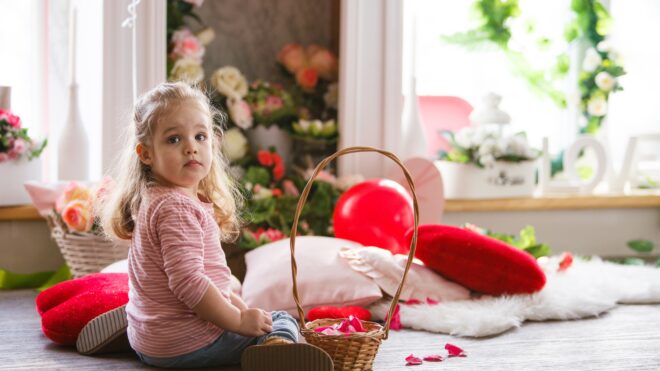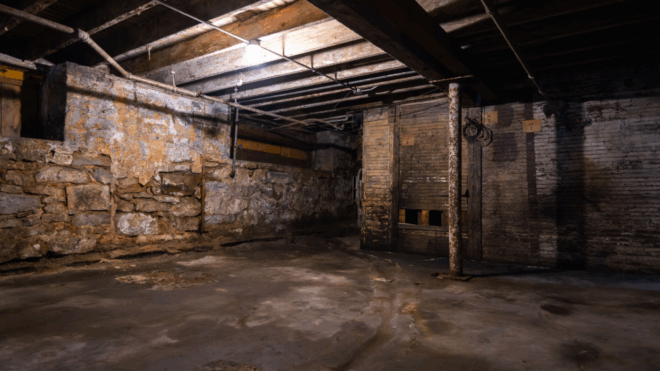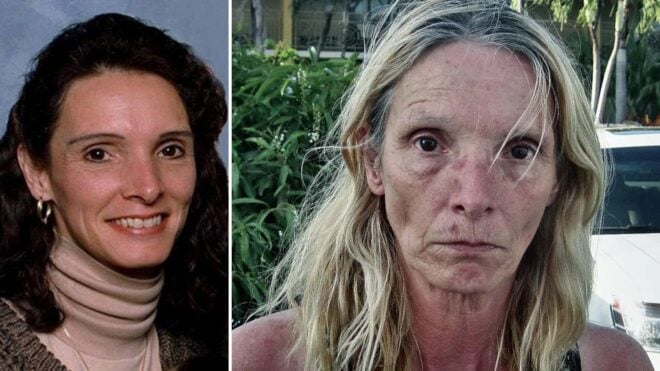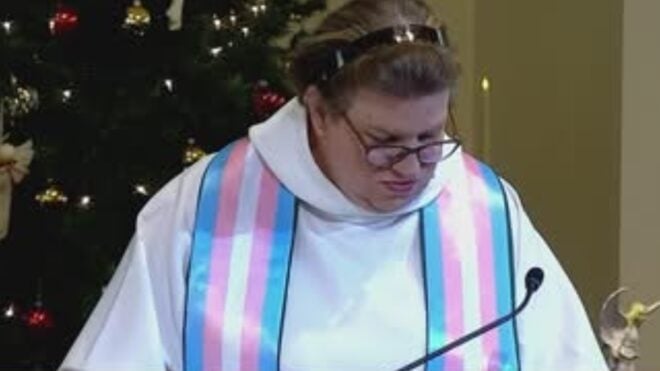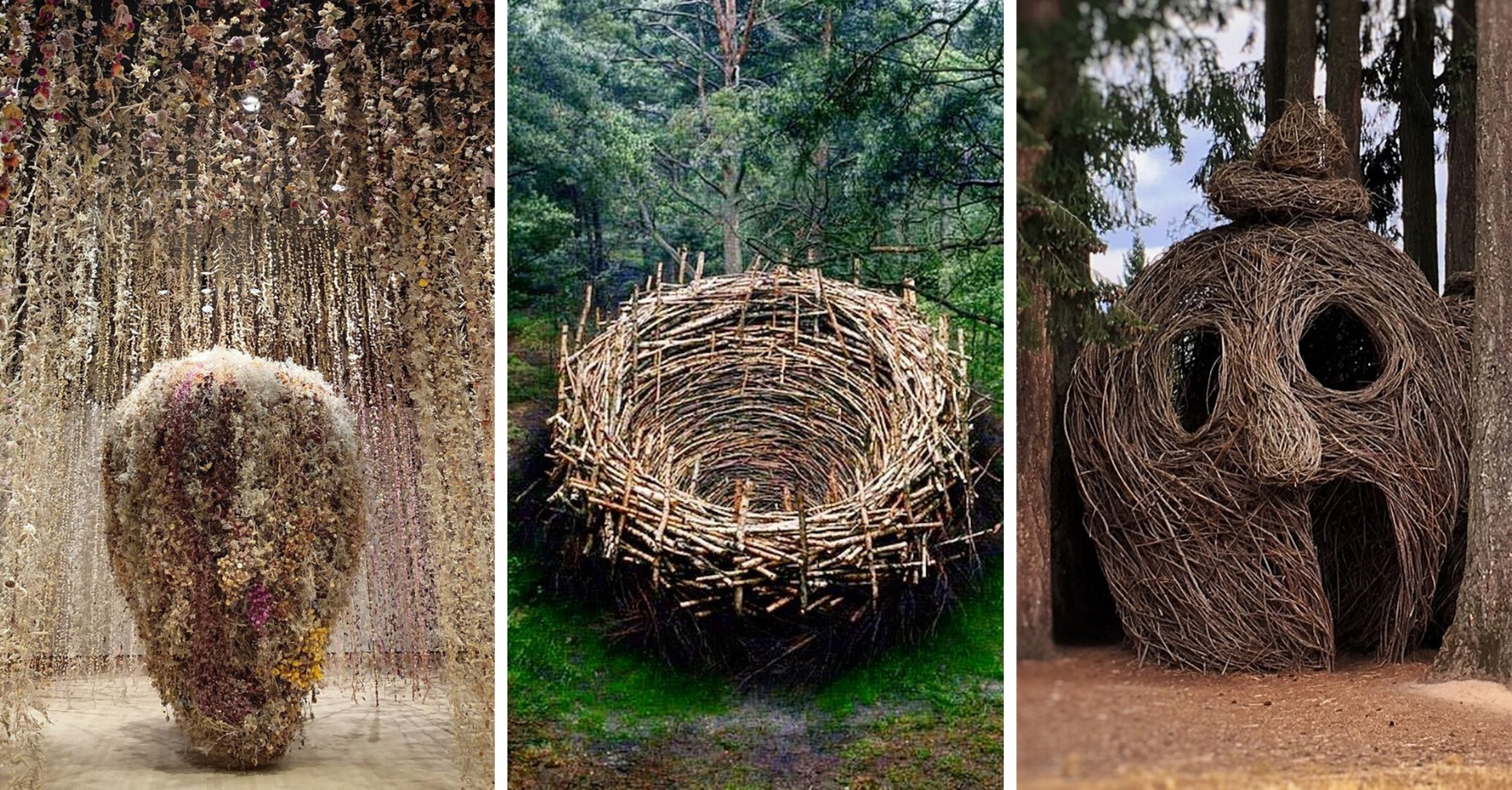
We're more concerned about our environment than ever before. We have good reason to feel that way. All around the world, people are feeling the effects of shifting climates. Environmental artists like the ones featured below are using their platforms to shed light on these issues in new and thought-provoking ways.
Life may imitate art, but art provides necessary commentary on life. As issues related to climate and the environment become more prominent, so too do environmental art projects. Environmental art is a movement where artists work in harmony with the landscape around them to say something. Artists often utilize natural materials in these pieces.
"Environmental artists seek to investigate our human relationship with the environment through embedding their artistic practice within it," explains The Art Story. "This changes the way we think about the site of artistic production; as opposed to using the artist's studio as the sole location in which to create, Environmental artists engage the natural world in a much more active and immediate way either by working in new ways outside or by bringing natural materials into new settings."
These artists have risen to the challenge presented by environmental art projects. Their pieces will make you think more deeply about the world around you.
Agnes Denes
Agnes Denes became a pioneer of the environmental arts in the 1960s. She uses her large-scale projects to comment on sociopolitical ideas, like when she planted two acres of wheat on the future site of Battery Park City in Lower Manhattan. Now 88 years old, Agnes' body of work illuminates concerns about the natural environment of a space without being disruptive.
Nils-Udo
Nils-Udo has also been a member of the environmental art space since the 1960s. Nils-Udo focuses on the role that nature plays in human lives. He emphasizes the beauty of the natural world and its transformative nature.
Andy Goldsworthy
Andy Goldsworthy uses natural materials to comment on how natural landscapes change with the passage of time. Both a sculptor and a photographer, he crafts with future changes in mind. "It's just about life and the need to understand that a lot of things in life do not last," he has said of his own work.
Richard Shilling
Richard Shilling was inspired by the work of Andy Goldsworthy. It spawned his own style of environmental art, where he uses only objects found nearby in his works.
"That also describes the other most satisfying aspect of this art form," Richard said. "You use ephemeral materials and put all your focus and effort into creating something that reaches its zenith in only a short moment before beginning to degrade and returning back to nature from where it came. I absolutely love that."
Patrick Dougherty
Patrick Dougherty has built over 250 works made entirely of saplings. What began as small-scale structures have grown into monumental installations over time. His environmental art has received worldwide praise for being uncomplicated and unintrusive.
Chris Jordan
Chris Jordan uses discarded electronics and other items to paint a visual picture of the environmental emergency. His commentary on the excess of consumerism is striking in contrast with natural settings. The resulting art feels like the most urgent cry for sustainability.
Rebecca Louise Law
Rebecca Louise Law brings the outdoors indoors with large-scale installations. Her technique, which she compares to "painting in the air," creates an immersive experience that feels like being in the middle of nature itself. Her installations are entirely sustainable.
Benjamin Von Wong
Benjamin Von Wong's conceptual photography raises awareness of environmental issues. For Ben, he feels it's his responsibility as a creator.
"The reason I do environmental projects is simply because I want to have a positive impact on the world," he told PHLearn. "That’s how I stumbled on it. I just want my work to be useful, because creation for the sake of creating doesn’t make sense and creating for the sake of making a lot of money for another company is kind of lame."
Edith Meusnier
Edith Meusnier has taken her love of textile arts outdoors. "My work consists of designing ephemeral and artificial Installations within nature, in order to let the sun and rain increase the transparency effects and illusions," she explains.
"With plastic ribbons, I draw in space an unusual parenthesis that questions the ambiguous relationship between mankind and its environment."
Rune Guneriussen
Rune Guneriussen brings everyday objects outside. What's interesting is that he's the only one to see his final projects in person. His photos are the only proof that these magical and carefully crafted installations ever existed.
Rob Mulholland
Rob Mulholland explores the complex relationship between humans and the natural world using a variety of space-altering materials. He uses these materials to provoke viewers to examine the uniqueness of their own relationship with the natural world.
Jaakko Pernu
Jaakko Pernu is a Finnish sculptor with a love of the great outdoors, especially forests. He draws inspiration from his early childhood and enjoys distorting wood to create graceful and unique structures.
"My artworks are usually playing with some contradictions or anti-thesis such as light combined with large, external basic form combined with internal coincidental material, transparent lucid form combined with solid structure, irony/humour combined with fine art, intuition with refined handwork and so on," he explains in his bio. "Especially I like to make site-specific artworks."
Andrew Rogers
Andrew Rogers makes large-scale sculptures with the help of the members of local communities he creates his works in. "He consults with both local environmental and political authorities and community elders," explains Architectural Digest. "He targets otherwise unusable land, and ensures that the men and women he employs are paid equally."
Luzinterruptus
Luzinterruptus is an anonymous collective that uses light to create art in urban public spaces. They use their work as a commentary on excess. In 2017, they made headlines when they created a labyrinth made of plastic waste in Madrid's Plaza Mayor.
Rachel Sussman
Rachel Sussman's work opens the discussion of longevity in nature. Her biggest project, The Oldest Living Things in the World, aims her photography at natural objects that have existed for thousands of years. Her images comment on the damage climate change has done in a jarring way, but she hopes they communicate more positive messages as well.
"I also hope the audience can internalize some of these messages — the values in the perseverance, the living through adversity that these organisms embody," she told the National Endowment for the Arts.
"There are a lot of positive messages to be gleaned from these long-lived organisms. They tend to grow very slowly. They're not very flashy. The oldest ones tend to be the least attractive. There are exceptions to all of the rules, but it's a great way to, I think, personalize something that otherwise, in terms of the numbers and the science, can be so abstract that we just don't take them in. So I'm trying to create a more personal way to connect."



